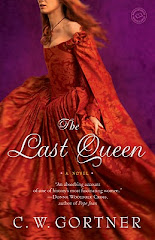 th Antinous of Bithynia's affair with the emperor during the second century CE—a relationship far more intimate than Hadrian’s sanctioned political marriage. I'm also very pleased to welcome Melanie here on the first league of her virtual tour with Historical Fiction Virtual Tours.
th Antinous of Bithynia's affair with the emperor during the second century CE—a relationship far more intimate than Hadrian’s sanctioned political marriage. I'm also very pleased to welcome Melanie here on the first league of her virtual tour with Historical Fiction Virtual Tours.
Please join me in welcoming Melanie McDonald!
In Eromenos, my debut novel, the Greek youth Antinous of Bithynia recounts his affair with the Roman emperor Hadrian during the second century CE—a relationship far more intimate than Hadrian’s sanctioned political marriage, though it lasted only seven years. Readers have asked why I decided to write about Antinous and Hadrian. Although I knew a little about Hadrian, because of the wall he had built on the border between present-day Scotland and England to keep barbarian tribes out of Roman Britain, I had not heard of Antinous until I read the novel Memoirs of Hadrian by Marguerite Yourcenar.
These two were real people, not fictional characters, yet their story involves the same eternal verities—sex, love, death, loss, power, transformation—as classic love stories fou nd throughout mythology, literature and the arts, in works like Orpheus and Eurydice, Romeo and Juliet and Aïda. Even after two thousand years, the story of Antinous and Hadrian remains too complex, sad and beautiful ever to be lost to the dust of antiquity (or, for that matter, to the sludge of homophobia). I began to read non-fiction historical works about Antinous and Hadrian, and was struck by how none of these sources ever revealed any thoughts or words attributed to Antinous, although his beautiful image still may be found in works of art in museums around the world. History had silenced Antinous. I hoped that another version of their story, told this time from his point of view, might be able to give back a voice to this young Greek, the beloved of Hadrian, who seemed to have none.
nd throughout mythology, literature and the arts, in works like Orpheus and Eurydice, Romeo and Juliet and Aïda. Even after two thousand years, the story of Antinous and Hadrian remains too complex, sad and beautiful ever to be lost to the dust of antiquity (or, for that matter, to the sludge of homophobia). I began to read non-fiction historical works about Antinous and Hadrian, and was struck by how none of these sources ever revealed any thoughts or words attributed to Antinous, although his beautiful image still may be found in works of art in museums around the world. History had silenced Antinous. I hoped that another version of their story, told this time from his point of view, might be able to give back a voice to this young Greek, the beloved of Hadrian, who seemed to have none.
I enjoyed doing the research for Eromenos. At first, I just wanted to know enough about life in Rome in the second century CE to make the story believable for those readers who happen to be knowledgeable about the era. The deeper I dug into life at Hadrian’s court, however, the more I discovered about the many other interesting individuals who had surrounded Antinous there. I knew they would make wonderful characters in a novel. Take Favorinus of Gaul: A hermaphrodite once accused of cuckolding a powerful Roman citizen, a “barbarian” who spoke perfect Greek (his accent was better than Hadrian’s), he kept up a running feud with Polemo of Smyrna, another philosopher of Hadrian’s retinue. Only Favorinus, though, was nervy enough to contradict even the emperor on occasion.
Another court member who fascinated me was a physician, Marcellus Sidetes, who wrote about the symptoms of and possible treatments for lycanthropy. Yes, werewolves, in ancient Rome. Marcellus notes that those afflicted: ". . .go out by night in the month of February, hanging about tombs and behaving like dogs or wolves until morning returns, leaving them hollow-eyed, dry-tongued, listless, and thirsty."*
Marcellus writes as well about his own experiments in treating injured gladiators. The battlefield always has provided gruesome inspiration for the surgeon. New weapons inflict terrible new wounds upon human flesh, and this in turn calls for the healers to devise new techniques in the sometimes futile attempt to treat these injuries.
Given the accomplishments of such individuals, why not play around with the idea that Antinous, the famous beauty, also serves as a source of inspiration for others at cou rt, not just for Hadrian? So the novel also explores the idea of Antinous as muse, and shows how he may have listened to this physician about his theories, or encouraged that philosopher to gather his thoughts in book form, or suggested that a fellow Bithynian, Arrian, write down those stories he told about hunting and hounds. Beauty and power often have found themselves bedfellows—and beauty has a power all its own, albeit one more fleeting and fragile than other kinds of power.
rt, not just for Hadrian? So the novel also explores the idea of Antinous as muse, and shows how he may have listened to this physician about his theories, or encouraged that philosopher to gather his thoughts in book form, or suggested that a fellow Bithynian, Arrian, write down those stories he told about hunting and hounds. Beauty and power often have found themselves bedfellows—and beauty has a power all its own, albeit one more fleeting and fragile than other kinds of power.
Once the actual writing got underway, I gave myself permission to take some liberties—to make up interactions between Antinous and other individuals at court, and even to make up characters, such as the servant girl Calliria, to serve the story. Eromenos is a work of fiction, after all, not a factual account of history. And although it’s a story with a tragic ending, I tried to incorporate scenes of humor and discovery, as well. The court of Hadrian included the most brilliant minds to be found in the empire, and Hadrian himself was extremely intelligent and well educated, engaged in many areas of study, including architecture, literature, art, poetry, and philosophy. The imperial court of Hadrian, fourteenth emperor of Rome, must have been an amazing place in which to come of age for a bright, educated, beautiful young man like Antinous.
Eromenos was a pleasure to write, and I hope it proves a pleasure for readers, too. Thanks very much, Christopher, and happy ear-rubs for Paris the Corgi from me!
Thank you, Melanie! For more information about Melanie and her work, please see her website.
*Marcellus Sidetes, translated by Daniel Ogden in Magic, Witchcraft and Ghosts in the Greek and Roman Worlds: A Sourcebook, Oxford University Press, New York, 2002. Quoted in Eromenos, p. 113, by permission.












5 comments:
I am looking forward to reading this for my review as part of the tour.
I enjoyed reading your comments about your book. I'd heard about it, but you have definitely peaked my interest. Where else is your virtual tour taking you?
This sounds interesting - I had never really considered Hadrian being a person (as bad as that sounds) - I only thought about his wall. Thanks for this post.
Thank you, everybody (and happy ear-rubs to you, too, Pricilla)--the tour schedule for EROMENOS can be seen on www.melaniejmcdonald.com
and also can be followed on Twitter, #EromenosVirtualBookTour. Thanks again, Christopher, for hosting me on Historical Boys.
I don't know a lot about this time period, but this book sounds fascinating.
Thanks for sharing some behind the scenes inspiration.
Cheryl
Post a Comment